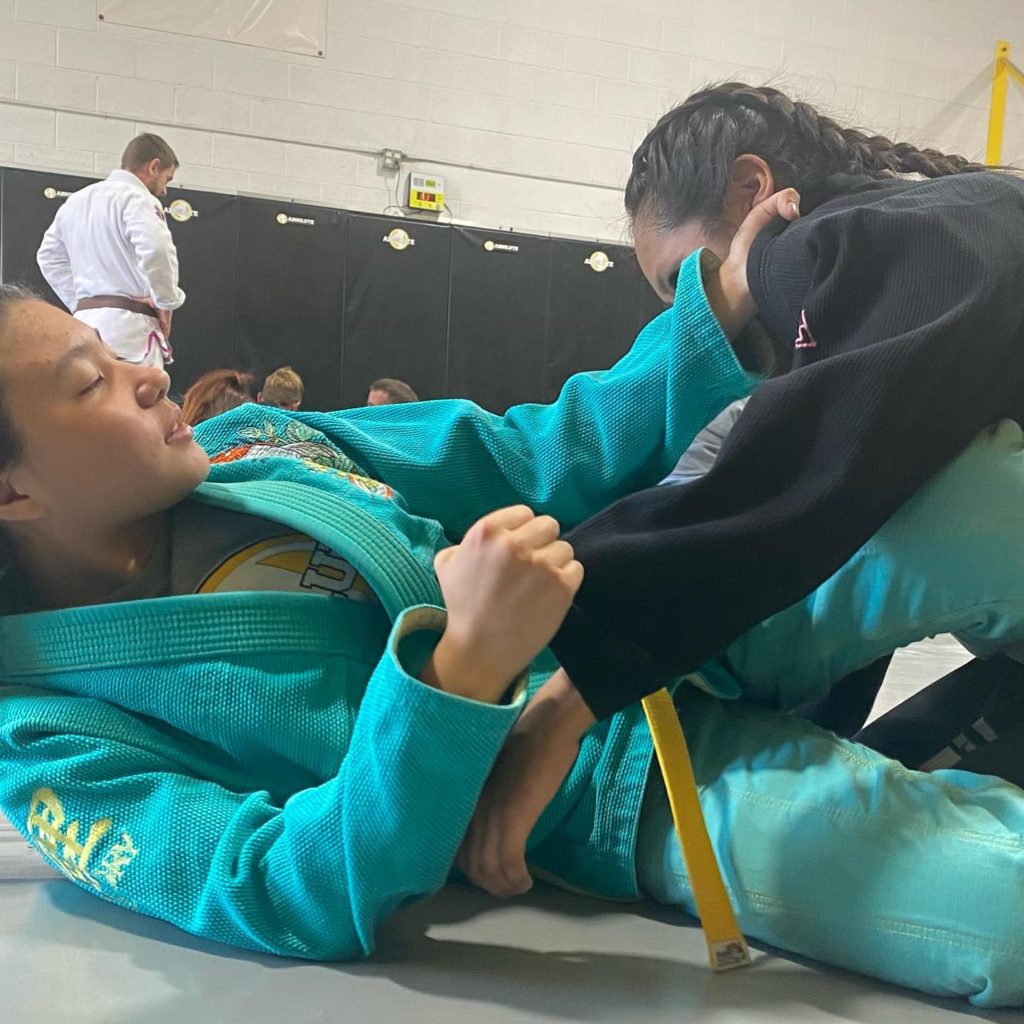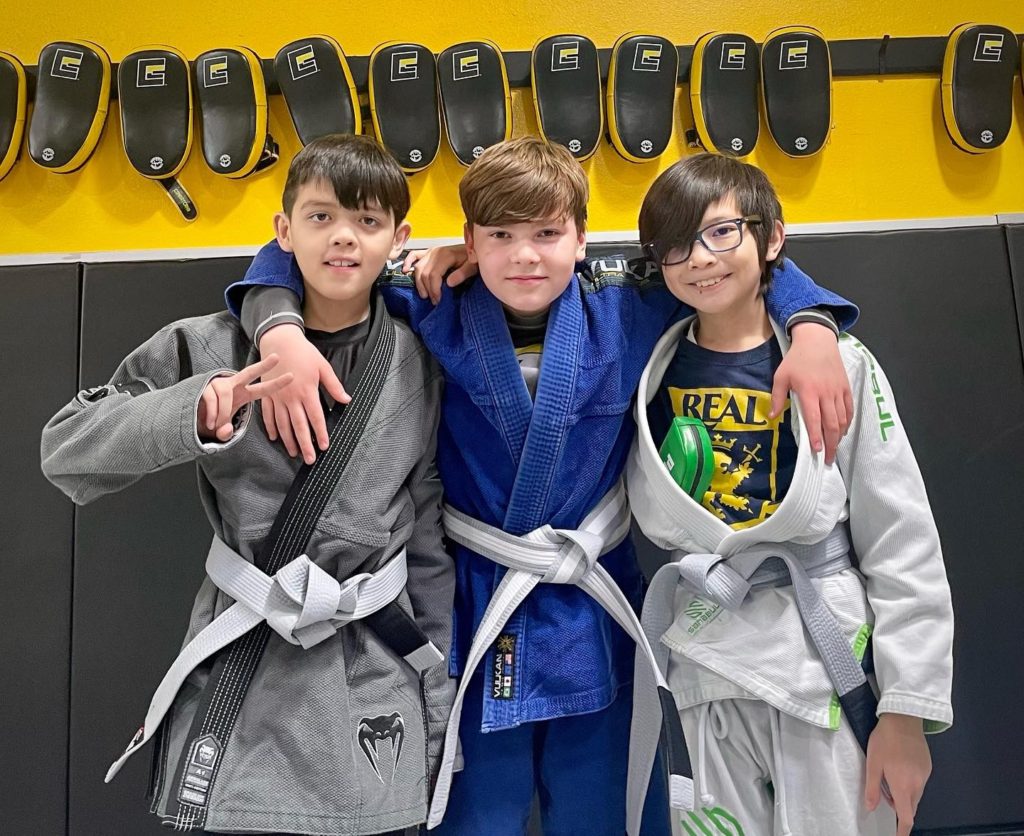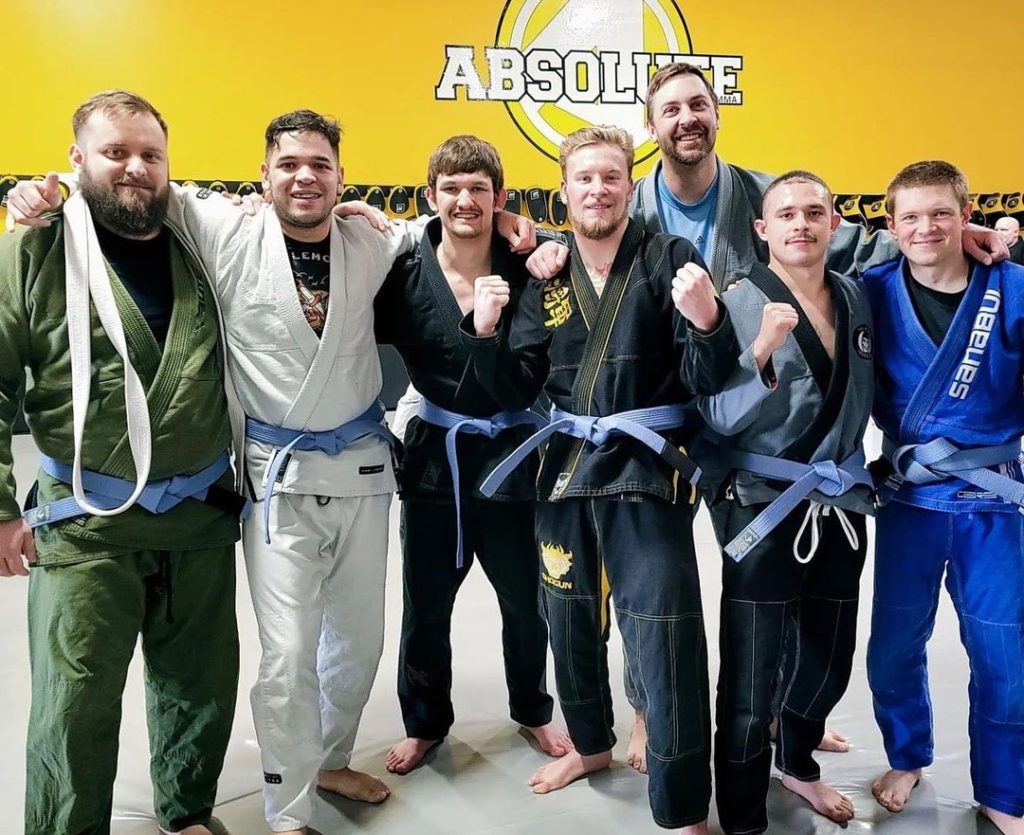
Brazilian Jiu Jitsu is one of the fastest growing Martial Arts in the world! At Absolute MMA in West Jordan, Utah, we teach Brazilian Jiu Jitsu for students of all levels. Our classes are at varying times throughout the week to meet your needs.
If you’re reading this blog post, you’re interested in learning more about the belt system in Brazilian Jiu Jitsu. We’ll briefly cover what Brazilian Jiu Jitsu is before diving into the belt system.
What is Brazilian Jiu Jitsu?

Brazilian Jiu Jitsu (BJJ) is a hand-to-hand combat system that places an emphasis on technique through leverage and control to survive or defeat a bigger, stronger, more aggressive opponent. The foundation of this Martial Art goes back to Japanese Judo and Jiu Jitsu with further development of techniques by Grand Master Helio Gracie in the early 1900s in Brazil. Over time, the art of BJJ has grown to also include elements from other combat arts including Freestyle Wrestling and Catch Wrestling.
When you attend BJJ classes at Absolute MMA, you’ll learn different techniques such as takedowns, submissions like joint locks/chokes, and how to escape bad positions. Our instructors are here for every step of your journey to help you with your goals. Whether you’re a competitive athlete or you are looking for ways to cross-train, we have you covered.
At Absolute MMA, we trace our BJJ lineage through our head coach and professor Rob Handley (5th degree blackbelt) who is under Grand Master Flavio Behring (9th degree blackbelt). Grand Master Flavio Behring began his BJJ journey by learning from Grand Master Helio Gracie (10th degree black belt). Now that you have a better idea of the history of BJJ, let’s move onto the BJJ belt system and common questions we receive about belt ranks/promotions.
What is the Brazilian Jiu Jitsu belt system?
Like other Martial Arts such as Karate and Tae Kwon Do, Brazilian Jiu Jitsu has a belt system. This system allows instructors to recognize the growth and progress of a student as he/she learns BJJ. There are youth belt colors for children under 16 years of age and adult belt colors.

Here are the youth belt colors:
- White
- Gray-White
- Gray
- Gray-Black
- Yellow-White
- Yellow
- Yellow-Black
- Orange-White
- Orange
- Orange-Black
- Green-White
- Green
- Green-black
Youth participants in BJJ are eligible to be promoted to the rank of blue belt when they’re 16 years of age. Younger participants will be ranked according to the adult system after age 16.
Here are the adult belt colors:
- White
- Blue
- Purple
- Brown
- Black
As you may have noticed, there are fewer adult belt colors than there are youth belt colors. The higher number of youth belts means more promotions which can help younger students stay motivated as they grow and improve.
Common questions about belt ranks and belt promotions

Below are the answers to the most common questions we receive about what each belt means and factors that are taken into consideration for belt promotions.
Q: How long does it take to get your black belt in BJJ?
A: An individual who has earned his/her BJJ black belt typically has been training for 10 or more years.
Q: Which belt is the first belt in BJJ?
A: The belt you begin your BJJ journey with is a white belt.
Q: What do you need to do to get your blue belt?
A: Someone who has been promoted to the rank of blue belt has shown a basic understanding of BJJ fundamentals. A blue belt has shown the ability to be a good teammate and student. This person also trains consistently and works hard in class.
Q: If I have a black belt in a different Martial Art, do I need to start BJJ as a white belt or can I start at a higher rank?
A: All students new to BJJ start training as white belts. Yes, experience in other Martial Arts can help in your progress but it won’t give you a headstart in your belt rank.
Q: What do the stripes on belts mean?
A: At Absolute MMA, BJJ students receive stripes on their belt in between each individual belt. This signifies their level of proficiency within a belt rank. For example, a 4-stripe purple belt tends to have more experience and technical ability than a 1-stripe purple belt. The same goes for a 4-stripe white belt and a 2-stripe white belt.
Q: Do I need to compete to get my blue belt in BJJ?
A: No, you don’t need to compete to earn your blue belt but we do encourage our students to compete if it’s something they’re interested in. Deciding to compete as a white belt helps you progress since you’re gaining experience outside of the gym. You’re also giving yourself a chance to pressure-test your knowledge and skills against a fully resisting opponent who is not already familiar with your current skill level.
Q: Do I need to pass a test in order to be promoted in BJJ?
A: At Absolute MMA, the only belt rank we test for is the black belt. Promotions for blue, purple, and brown are determined by Professor Rob Handley. Some of the major factors that are considered in belt promotions are your ability to apply techniques you’re learning in live sparring, being a great teammate, and consistently attending class.
Q: Will I receive help as I progress in BJJ?
A: We’re here every step of the way to help you achieve your goals with BJJ! We’ll be able to answer your questions while providing you with the support your need to learn and thrive. On any given day, you’ll be on the mat with other people learning BJJ who will quickly become your friends and teammates.
Begin your Brazilian Jiu Jitsu journey at Absolute MMA today!
Learning the art of Brazilian Jiu Jitsu here in West Jordan, Utah will be one of the most rewarding things you can do. From improving your fitness to learning practical self-defense skills, you will see growth in different areas of your life. You’ll even be able to make new friends as you train here at Absolute MMA. To begin your BJJ journey, schedule your free trial here: https://absolutemma.com/free-trial/

